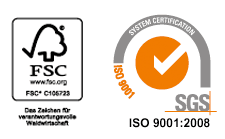Do you have any questions?
Here we explain some technical terms from printing technology. Do you have a suggestion for improvement? Then write us an e-mail!

sw-Laserprinter
The product can be printed with a standard black and white laser printer. For cards, it may be necessary to set a suitable paper thickness on the printer due to the higher grammage. Some printers also allow the setting to "foil". Please note that the printing result may also depend on the temperature of the fuser unit.
⇐ Zur Startseite
Color-Laserprinter
The product can be printed with a standard colour laser printer. For cards, it is sometimes necessary to set a higher thickness of paper on the printer due to the higher paper grammage. Most printers also allow the setting to "foil". Please note that the printing result may additionally depend on the temperature of the fuser unit. Due to the variety of different colour laser printers, we recommend a test run with samples that we will be happy to send you.
⇐ Zur Startseite
Inkjet printer
The product can be printed with standard inkjet printers. For cards with matt surfaces, it may be necessary to set a suitable paper thickness on the printer due to the higher grammage.
⇐ Zur Startseite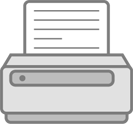
Dot matrix printer
If you actually still have a dot matrix printer, you can still print our product with it.
⇐ Zur Startseite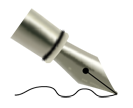
Signature-capable
The product can be written on with ballpoint pens or similar. Please request samples from us for testing purposes, which we will be happy to send you.
⇐ Zur Startseite
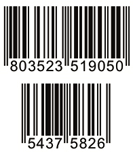
European Article Number or EAN
Source: Wikipedia ⇐ Zur StartseiteThe International Article Number (also known as European Article Number or EAN) is a standard describing a barcode symbology and numbering system used in global trade to identify a specific retail product type, in a specific packaging configuration, from a specific manufacturer. The standard has been subsumed in the Global Trade Item Number standard from the GS1 organization; the same numbers can be referred to as GTINs and can be encoded in other barcode symbologies defined by GS1. EAN barcodes are used worldwide for lookup at retail point of sale, but can also be used as numbers for other purposes such as wholesale ordering or accounting. These barcodes only represent the digits 0–9, unlike some other barcode symbologies which can represent additional characters.
The most commonly used EAN standard is the thirteen-digit EAN-13, a superset of the original 12-digit Universal Product Code (UPC-A) standard developed in 1970 by George J. Laurer. An EAN-13 number includes a 3-digit GS1 prefix (indicating country of registration or special type of product). A prefix with a first digit of "0" indicates a 12-digit UPC-A code follows. A prefix with first two digits of "45" or "49" indicates a Japanese Article Number (JAN) follows.
The less commonly used 8-digit EAN-8 barcode was introduced for use on small packages, where EAN-13 would be too large. 2-digit EAN-2 and 5-digit EAN-5 are supplemental barcodes, placed on the right-hand side of EAN-13 or UPC. These are generally used for periodicals like magazines or books, to indicate the current year's issue number; and weighed products like food, to indicate the manufacturer's suggested retail price.

Interleaved 2 of 5 (ITF)
Source: Wikipedia ⇐ Zur Startseite
Interleaved 2 of 5 (ITF) is a continuous two-width barcode symbology encoding digits. It is used commercially on 135 film, for ITF-14 barcodes, and on cartons of some products, while the products inside are labeled with UPC or EAN.
ITF encodes pairs of digits; the first digit is encoded in the five bars (or black lines), while the second digit is encoded in the five spaces (or white lines) interleaved with them. Two out of every five bars or spaces are wide (hence exactly 2 of 5).
ITF is often used for marking product ID numbers or other codes, of various lengths, on item cartons and multi-unit cases. One specific instance of this, standardized by GS1, is the ITF-14 bar code used to mark packages with Global Trade Item Numbers. In these uses, the ITF bar code symbol is usually printed surrounded with a thick black rectangular border called the Bearer Bar. The Bearer Bar surrounds the entire symbol and the quiet zones, abutting the ends of the bars. The purpose of a Bearer Bar is to equalize the pressure exerted by the printing plate over the entire surface of the symbol, and to enhance reading reliability by helping to reduce the probability of misreads occurring when the bar code is scanned at too large an angle so that the scanning beam crosses the top and/or bottom edge of the bar code rather than scanning across all bars, entering through the leftmost bar and exiting through the rightmost bar (or vice versa for a reverse scan). Such a "short scan" which does not extend through all of the bars obviously cannot result in a correct read of the complete bar code, but by the nature of the interleaved 2 of 5 code, it is possible for a short scan that begins in the middle of the bar code to begin with a pattern that corresponds to the required start pattern, or for a short scan that ends in the middle of the bar code to end with a pattern that corresponds to the required stop pattern. In this way the short scan, though incorrect, may appear to be a correct full scan. The Bearer Bar prevents this error, as a short scan will pass through the Bearer Bar as it passes across the top or bottom edge of the bar code. Since the Bearer Bar is much wider than any legitimate black bar, it will ensure that the short scan cannot appear to begin with the correct start pattern and end with the correct end pattern, forcing an invalid scan. The bar code can then be re-scanned, either automatically or manually. (If the short scan was not recognized as invalid, the misread data would be accepted and used as if it was good data, and there would be no chance to automatically rescan the bar code to correct the bad data.)

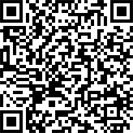
2D Code
Source: Wikipedia ⇐ Zur StartseiteA QR code (abbreviated from Quick Response code) is a type of matrix barcode (or two-dimensional barcode) invented in 1994 by the Japanese automotive company Denso Wave. A barcode is a machine-readable optical label that contains information about the item to which it is attached. In practice, QR codes often contain data for a locator, identifier, or tracker that points to a website or application. A QR code uses four standardized encoding modes (numeric, alphanumeric, byte/binary, and kanji) to store data efficiently; extensions may also be used.
The Quick Response system became popular outside the automotive industry due to its fast readability and greater storage capacity compared to standard UPC barcodes. Applications include product tracking, item identification, time tracking, document management, and general marketing.
A QR code consists of black squares arranged in a square grid on a white background, which can be read by an imaging device such as a camera, and processed using Reed–Solomon error correction until the image can be appropriately interpreted. The required data is then extracted from patterns that are present in both horizontal and vertical components of the image.

How to store paper
The products are packed so that they arrive in optimal condition and are ready for immediate use. Paper should always be stored in a dry and warm place, as the storage conditions have an influence on the quality. If the paper becomes too moist, it starts to curl and will not be processed optimally in the printer. The print quality also suffers. The printer will no longer be able to feed the paper through correctly and may cause a paper jam.
To ensure that the labels and cards remain usable in the long term, we recommend:
- Store them in a cool, dry room at 15° to 25° Celsius.
- Pay attention to the humidity, 40-60% is recommended
- Stack the boxes carefully and not more than 5 boxes high
- Leave unused sheets in the box
- For flatness, we have a cover sheet on 250/125 sheets, remove this first when using
- Use within 2 years for optimum shelf life and quality



